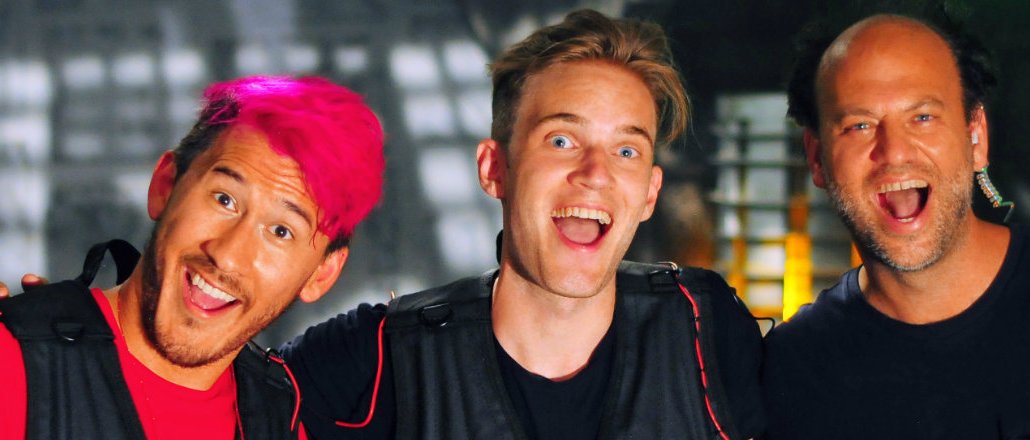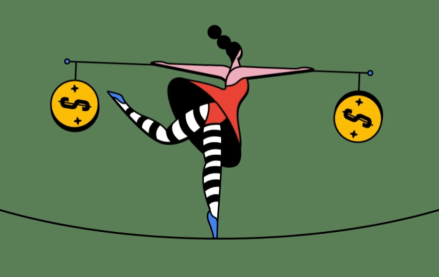Join us Dec. 1-3 in New Orleans for the Digiday Programmatic Marketing Summit

YouTube has unveiled its long-rumored subscription service, and the initial responses are decidedly mixed.
The video giant, which for most of its lifetime has existed as a free, open, ad-funded video service, is now erecting a walled garden that’s almost identical to its free version, only without ads. The subscription service, called YouTube Red and listed at $9.99 per month, will offer everything users can already watch on the free version of YouTube, plus a slate of original films and TV series that are exclusive to paying members.
While seen as a smart experiment by YouTube to diversify its own revenue streams — especially as it fights off new and emerging competitors — there are enough moving parts to YouTube Red that keep many in the Web video business skeptical.
Will YouTube addicts pay up?
The chief concern for YouTube (aside from being confused with porn site RedTube): Are consumers willing to pay for something they’re used to getting for free — and will continue to even after YouTube Red’s beta launches on Oct. 28.
With YouTube Red, the initial goal has to be to convert the subset of users who watch a ton of videos on the platform and as a result might not want to sit through ad after ad. While in a different medium, it’s a similar approach to how Spotify has targeted its heaviest users with its premium plan, which also runs for $10 per month. It has worked for Spotify, which in June claimed 20 million paid subscribers out of more than 75 million active users.
What’s more, similar to how Hulu introduced a $12 ad-free version for users who simply did not want to put up with ads, YouTube Red could play a similar role for YouTube. There is a growing percentage of users who are blocking ads — it’s unclear how much overlap there is between this subset and YouTube’s heaviest users — but an ad-free version could be key to monetizing that lost revenue.
“This underscores for us the lengths people are willing to go to escape advertising,” said Topher Burns, group director of distribution strategy for Deep Focus. The challenge, for advertisers, is to focus more on creating content that people would be willing to pay to watch.
Is exclusive content enough of a lure?
YouTube faces the same challenge. It’s betting that original and exclusive content will encourage users to sign up for the subscription service — much in the way established subscription services like Netflix and Hulu have used exclusive content to define their brands and grow subscribers.
Of course, this isn’t YouTube’s first bet on original content. What’s different this time around is that — unlike its “original channels” initiative in 2012 and 2013 — the company has rededicated itself to working with its own talent pool.
Take, for instance, the biggest YouTuber on the planet, Felix Kjellberg, aka PewDiePie. He will star in a reality series called “Scare PewDiePie,” in which he encounters scary situations inspired by his favorite video games. Other big names on YouTube, including Rooster Teeth, Joey Graceffa and Toby Turner, will be releasing films and shows on YouTube Red starting in 2016.
This move can’t be understated. As YouTube star Freddie Wong recently told Digiday, it’s hard to make money off of long-form content in an open and ad-supported environment like YouTube. By introducing a paid version, YouTube might be able to keep some of the stars who have been looking elsewhere.
YouTube pretty much had online video to itself for a while, quickly dispatching most rivals. But times change. Now, YouTube has credible rivals on several fronts, not least in Facebook. All of these companies have been courting top YouTube stars in the hopes of using their influence to drive more viewership on their platforms. The advantage YouTube has is that these creators are already used to engaging with their fans on YouTube.
“There is substantial end-user loyalty to YouTube,” said Brian Selander, evp at Whistle Sports. “We will see how that translates to monetization, now that it can come at a cost.”
Will it work?
YouTube itself is pretty optimistic. According to one YouTube executive, in the first three months after YouTube Red’s launch, the company expects subscriptions to drive 5 to 10 percent in additional revenue for creators and channels — on top of whatever growth the platform sees on the ad-supported side.
“They’ve said, ‘It’s is going to be great, you’re going to love it; the user experience will be much better. People pay for Spotify; they’re certainly going to pay for this,’” said an executive at a YouTube network. “Yeah, but a lot of people make money when they do a brand integration, and then the brand goes ahead and puts that video in front of other people’s videos.”
Which highlights the chief concern for YouTubers and networks: YouTube Red might be good for YouTube, but will it be good for most of the people actually making the content? Will YouTube Red cannibalize plain old regular YouTube?
YouTube sees it as an additive play; others are unsure, partially because the advertising experience on YouTube isn’t all that bad.
“YouTube has done a great job of matching advertising to people’s interests,” said Selander. “I think that has lessened the pain threshold that they are trying to eliminate with the subscription service.”
Images provided by YouTube
More in Media

Forbes launches dynamic AI paywall as it ramps up post-search commercial diversification plans
For the latest Inside the publisher C-Suite series, Digiday spoke to Forbes CEO Sherry Phillips on its AI-era playbook, starting with its AI-powered dynamic paywall to new creator-led commercial opportunities.

Creators embrace Beehiiv’s push beyond newsletters
Creators are embracing Beehiiv’s new website, product and analytics tools to help them grow beyond the competitive newsletter space.

Media Briefing: Publishers turn to paid audience acquisition tactics to tackle traffic losses
Publishers facing declining organic traffic are buying audiences through paid ads and traffic arbitrage, and using AI tools to do it.





